In 1991, Claire Henderson, a member of the History Department at Laval University in Quebec City, wrote a paper entitled The Aboriginal North American Horse supporting the beliefs of the North American Native people that horses were present long before the arrival of Europeans and did not go extinct.
“Dakota/Lakota Elders as well as many other Indian nations … contend that according to their oral history, the North American horse survived the Ice Age, and that they had developed a horse culture long before the arrival of Europeans, and, furthermore, that these same distinct ponies continued to thrive on the prairies until the latter part of the 19th century, when the U.S. government ordered them rounded up and destroyed to prevent Indians from leaving the newly-created reservations,” Henderson stated. “Some biologists have pointed out that Elders could indeed be correct, for while the mammoth and other Pleistocene mammals died out during the last Ice Age in both continents, if the horse survived in Eurasia, there is no reason for it to have become extinct in North America, especially given similar environment and climate on the steppes and prairies.”
Henderson conducted her own investigation, following information left by the French explorer LaVerendrye, who in 1642 went on a quest to find the People of the Horse, whom he hoped would take him to the Western (China) Sea. LaVerendrye's trail led to Wyoming, where Henderson interviewed Lakota tribal elders, and uncovered some interesting information.
“According to Elders, the aboriginal pony had the following characteristics: it was small, about 13 hands, it had a 'strait' back necessitating a different saddle from that used on European horses, wider nostrils, larger lungs so that its endurance was proverbial,” said Henderson. “One breed had a long mane, and shaggy (curly) hair, while another had a 'singed mane'."
Henderson did further research and discovered other French accounts of Lakota people being skilled horsemen in the mid-1600s and using horses to hunt buffalo.
“Several years prior to 1657, these Prairie Indians were already expert horsemen, having developed remarkable riding and hunting skills,” said Henderson. “That such expertise was developed by 1650 is remarkable in many ways. It implies that the original (Spanish horses) had so multiplied that within a few short years after the horses appeared, these Prairies Dakotas had devised methods for catching them, had learned to tame them, had become expert riders, had devised the most efficient buffalo hunting techniques on horseback, and had also devised techniques for training their horses in these skills. These accomplishments, in so short a time, seem all the more extraordinary when examining the development of similar skills in other areas of the world.”
In fact, she said, just seeing the Spanish riding horses would not have been enough for any of the Native cultures to become so proficient with horses so quickly. She said that in the Middle East, where a similar situation occurred with the Scythians bringing horses to the Assyrians (who had no prior experience with horses), it took about a century from the arrival of this new animal until its people rode awkwardly, and that it took several generations for them to become horsemen, even when experts were there to teach them.
“These examples from other cultures make it difficult to believe that the aboriginal horse had indeed disappeared during the last Ice Age,” Henderson concluded.


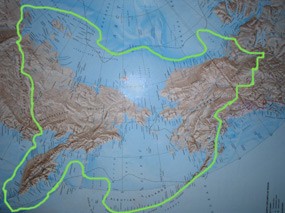
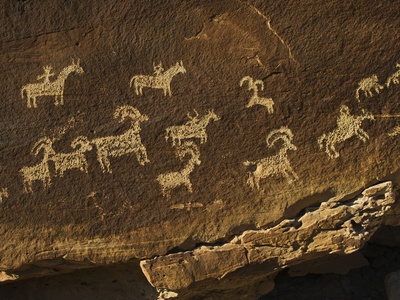
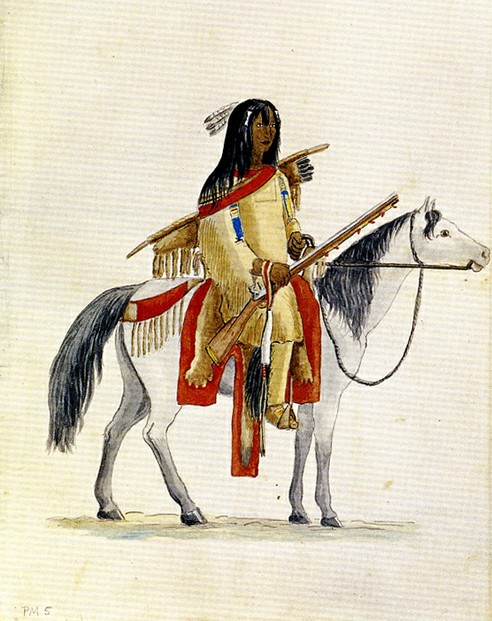
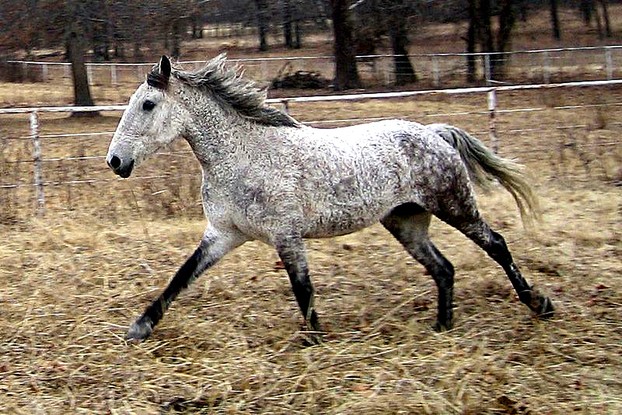
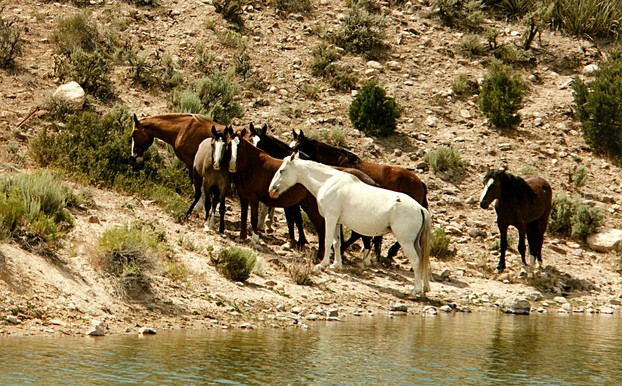





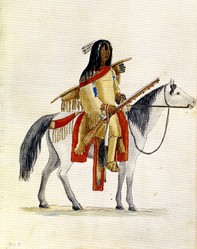

 Versatile Nova Scotia Duck Tolling Retrieverson 08/02/2014
Versatile Nova Scotia Duck Tolling Retrieverson 08/02/2014
 Should You Spay or Neuter Your Puppy?on 08/12/2014
Should You Spay or Neuter Your Puppy?on 08/12/2014
 Horse Racing History: the Preakness Stakeson 05/15/2014
Horse Racing History: the Preakness Stakeson 05/15/2014
 Dinosaurs Will Be On Display in Trenton, Ontario, Canadaon 07/29/2013
Dinosaurs Will Be On Display in Trenton, Ontario, Canadaon 07/29/2013

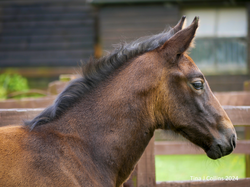
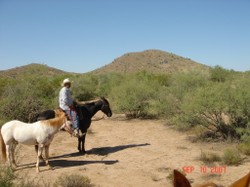
Comments
Readers will find this article of interest! https://indiancountrytoday.com/news/y...
I have done further research on Dr. Stephen E. Jones and discovered that his evidence regarding the Pratt Caves and Wolf Spider Caves is unsubstantiated and that the dates are wrong. I am changing the article, and have changed the link as well to a more detailed analysis of his claims. I am checking other links as well to make sure they work. Some pages have disappeared from the Web in the years since I wrote this story, so I am trying to find other copies of them.
Very interesting article, thanks, and nice to see it's been updated. Several of the links have , unsurprisingly, gone bad since it was written. I've found the one about aboriginal horses through a web search, and it was worth the effort. Anyone know where I can find the mentioned Canadian Geographic article?
Well researched and stated Mary.
Great article Terry. I have many documentations over the last 40 years of accounts pointing to the fact the horse never died out in North America. As recent as the early 1980s when interviewing the Pyramind Lake Indians they described the "curlies' as being shy and quiet horses not mixing with the ranch or "remount" horses. Unfortunately, they were rounded up and euthanized ( by our government) when we raised the question about the horses being curlies and being native.
Further information of Chinese explorers to the Pacific NW talks about the native people giving them horses and there is even ship records about 20 years after the Spanish commenting on the NW tribes being mounted on "Spotted horses" - leads you to ask how a few Spanish horses could have survived and bred an entire population of appaloosas in just 20 years.
When ever data has surfaced it seems to either disappear or get dismissed as impossible. Science should not be governed by politics, but rather continue to ask questions and explore.
Essential knowledge for all horse advocates.
We see many examples of species that survived the mass extinction in bear, big cats, buffalo, wolves, prong horn...the list is extensive. Even though surviving species are off-shoots or relatives of those species, the point is that they adapted to survive and repopulate. I think considering wild horses as 're-introduced' rather than a species that survived and adapted to a new landscape is simply more rhetoric to devalue them as a native species.
I especially enjoyed the references to Native oral histories, and the expertise of Native American and Canadian horse culture; most native-species deniers would have us believe that the only niche horses occupied prior to the European invasion was as a food source. But you have to consider, particularly where Plains Indians are concerned, how inefficient hunting bison would be without both a means of running with them and a necessary escape vehicle, should the hunt go wrong. Stealth alone would not have allowed Plains Indians to take a prey as large and dangerous as bison on a landscape nearly devoid of features to hide behind. Speed and surprise would have been necessary to successfully take down such large prey.
And there are petroglyphs in Nevada that detail Native relationships with horses well before Caucasians immigrated West.
A recent discovery in the California mountains found both a horse and burro, buried ceremoniously, and dated nearly 300 years before Europeans arrived. New discoveries are occurring constantly, and in archeological and geographic terms, we are just scratching the surface of a landscape we barely know. 'Extinction' should be couched less as a forgone conclusion, and more along the lines of theory. We know ancient North American camel, mammoth and mastodon did not survive, and there are no representative species. But what species were left behind - and evolved to survive - gives us a window into a world of endless possibility.
Excellent article and many well substantiated observations supporting the native North American horse that most likely never went completely extinct in North America. I made many of these points and additional ones in my book The Wild Horse Conspiracy and have a horse petroglyph there pictured that I discovered and many other remarkable finds concisely and eloquently put forth. Again. Way to go on this excellent article! Now we must make the belongingness of the horse in the natural world of North America a restored reality and reverse the decimation and elimination of the wild horse herds on their rightful lands here.
I agree completely. Possibilities include British Columbia, Washington and Oregon, as well as remote parts of South America. The wild Curlies also offer interesting possibilities for genetic testing.
Absolutely right, but I think that you might find these lines in wild horses in remote areas. There is much work here for a scientist.